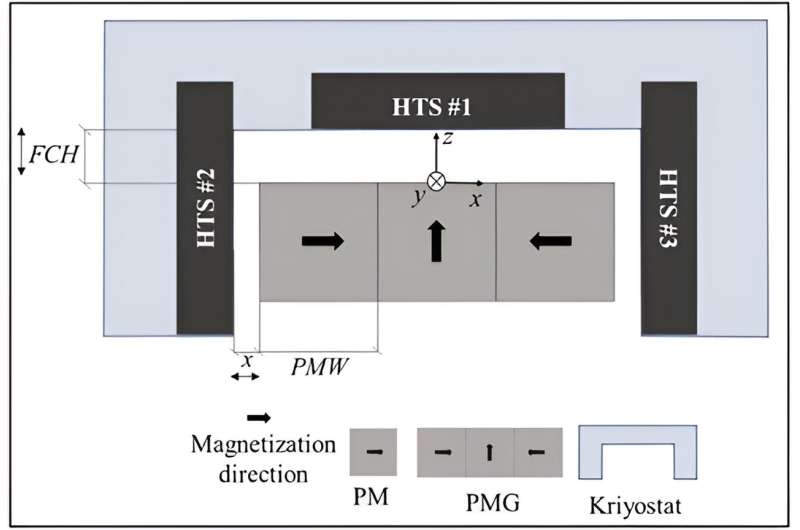This article has been reviewed according to Science X's editorial process and policies. Editors have highlighted the following attributes while ensuring the content's credibility:
fact-checked
trusted source
proofread
Improving Maglev performance with machine learning

For centuries, the transport sector has been one of the biggest contributors to global carbon emissions. To address the problem, many research groups are now actively exploring how technology can help transport systems to become more sustainable and environmentally friendly.
Among the most promising technologies now being studied is magnetic levitation (Maglev), which uses powerful magnets to push trains along while they hover just above their rails. By virtually eliminating the friction imparted by the track, Maglev trains can quickly accelerate to incredibly high speeds using very little energy.
Yet although Maglev systems have been widely studied for some time, it is still difficult for researchers to accurately measure the forces imparted by their magnets. This lack of precision is part of the reason why Maglev has not yet replaced more conventional, carbon-intensive forms of transport.
Through research published in Physica C: Superconductivity and its Applications, a team led by Erkan Caner Ozkat at Recep Tayyip Erdogan University, Rize, Tűrkiye, shows how artificial intelligence can help to boost the accuracy of these force measurements. Their results could bring the widespread rollout of Maglev systems a step closer to reality, ultimately helping the global transport sector to slash its carbon emissions.
"Since the human population and the amount of energy consumed are both rapidly increasing, energy-efficient systems are of great importance," Ozkat says. "Superconducting Maglev systems serve this purpose due to their property of frictionless movement."
In Maglev systems, magnets are composed of high-temperature superconductors which can convey electrical currents with zero resistance, even in ambient outdoor temperatures. Two different forces have a particularly strong influence over their performance: while levitation forces lift trains vertically upwards, lowering their friction with the track underneath, lateral forces act perpendicular to the tracks, causing trains to rock from side to side.
To ensure sufficient load carrying capacity and safe movement, it is crucial to enhance both the levitation and the lateral guidance force of Maglev systems. Previously, multi-surface interactions between the superconductors and the permanent magnetic track have proved effective. So far, however, mechanical constraints have made it difficult to measure the system experimentally.
Ozkat's team explored how this could be achieved with the help of artificial intelligence. "We were motivated by the idea that some of the research challenges related to Maglev systems can be overcome through machine learning," Ozkat explains.
Machine learning is a branch of artificial intelligence which makes accurate predictions about the properties of systems based on the previous experience of real data. Through their analysis, the researchers identified one machine learning model which performed particularly well at predicting both forces based on the properties of superconducting magnets, as well as the lateral and horizontal movements of Maglev trains.
Based on this model, the researchers then developed a step-by-step process for assessing how Maglev systems could be adjusted to maximize levitation forces, while keeping lateral forces within a certain defined tolerance. "We believe that the generalizable methodology we have presented is a guiding and problem-solving tool for researchers working in this field," Ozkat says.
They now hope their approach could help to advance the efficiency and performance of real Maglev systems, making them more practical and economical. If so, this could help accelerate their rollout in transport systems around the world—perhaps bringing the goal of net-zero carbon emissions a step closer to reality.
More information: Erkan Caner Ozkat et al, Machine learning driven optimization and parameter selection of multi-surface HTS Maglev, Physica C: Superconductivity and its Applications (2023). DOI: 10.1016/j.physc.2023.1354430
Provided by SciencePOD





















